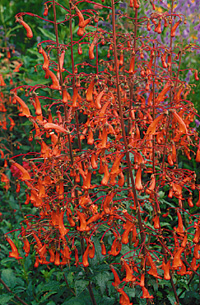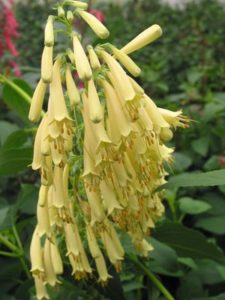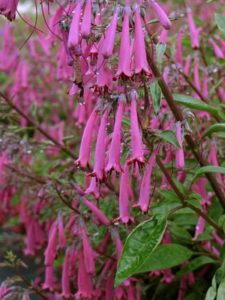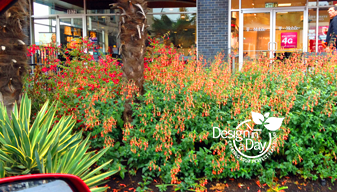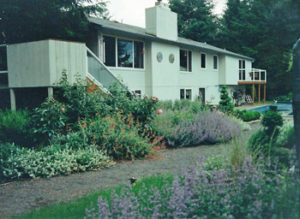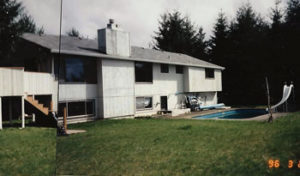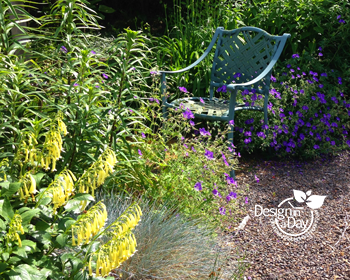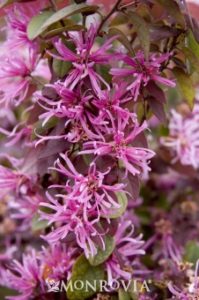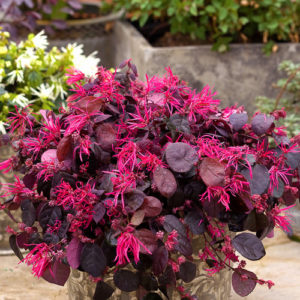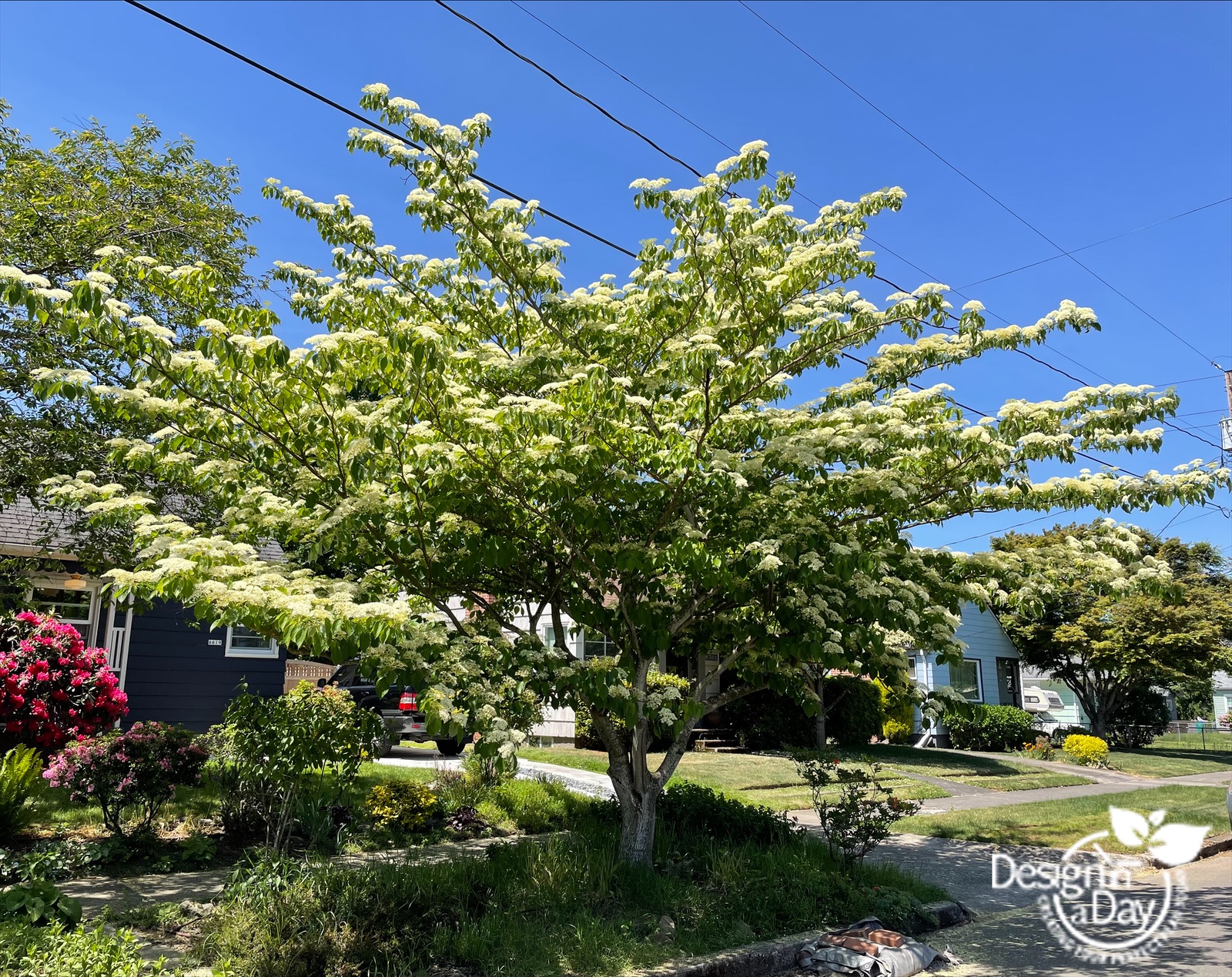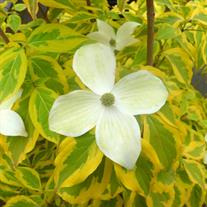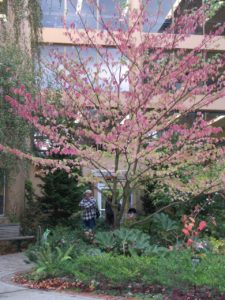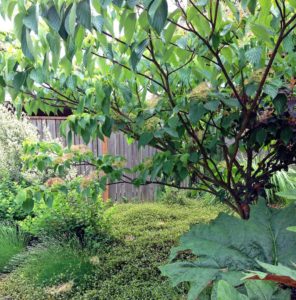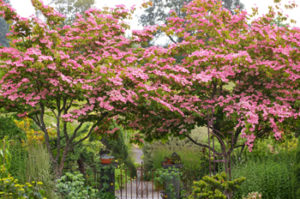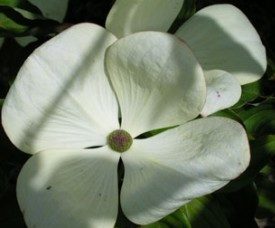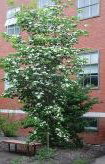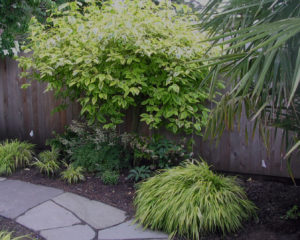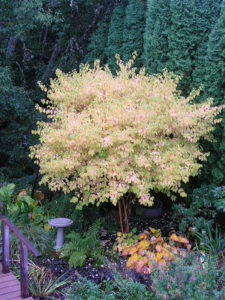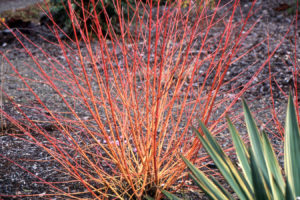Add Cape Fuchsia to Your Modern or Cottage Portland Landscape
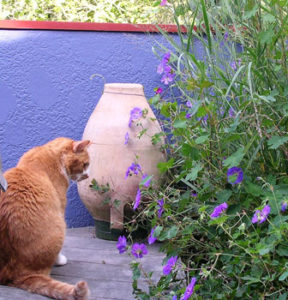
My cat loved to watch hummingbirds.
Hummingbirds love Cape Fuchsia for the nectar. I love to use it in designs because it adds so much color, is easy to grow and the new varieties work well with modern and cottage garden styles. This plant is a crowd pleaser and I use it frequently.
I planted my first Cape Fuchsia, Phygelius x rectus ‘Salmon Leap’ on my roof garden in Portland’s West Hills. It was at 900 feet and we had snow every year. The house was designed so that the third floor master suite had easy access to and a view of my roof garden. It had a hot tub that was 20 feet from my bed, a big overstuffed outdoor sofa with an overhead cover and plenty of Cape Fuchsia! In spite of the colder winters, the Cape Fuchsia (native to South Africa) never flagged or failed in the 12 years I lived there. I loved my roof garden and the only family members who loved it more were the 4 leggeds, Barley, Cee Cee and Cracker Jack. One particular day everyone was curled up on the sofa. I was reading and pets were napping. All was peaceful. I heard a strange whirring noise. At first I didn’t see anything unusual. Out of the corner of my eye I saw my pets’ heads were going up and then down and then up, I saw a small blur. What was happening?
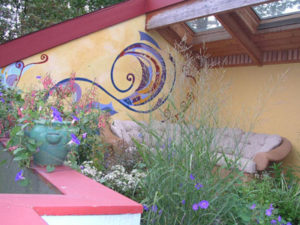
My roof garden 2006.
Humming Bird Mating Ritual
We were witnessing a hummingbird mating ritual. The male made a 90 foot oval flight pattern to within an inch of his intended. She was steadfastly ignoring him and drinking nectar from my Cape Fuchsia. There wasn’t even a flicker in his direction. The buzzing sound was made by his high speed downward trajectory. It abated on the way up. It was mesmerizing. It was one of those beautiful summer garden memories that I treasure. Just us mammals all watching the entertainment together.
Cape Fuchsia Varieties for Hummingbirds
If you would like to have some close encounters with hummingbirds or you just love colorful plants, the Cape Fuchsia is the perfect addition to your garden. The best hummingbird attractors are the older varieties because they flower in the most intense coral red shades. My favorites are ‘Devils Tears’, ‘Salmon Leap’ and ‘African Queen’, but they can a bit too rowdy for a small yard.
New Varieties of Cape Fuchsia
The new varieties are more compact and a little tidier in habit. The flower colors are available in more traditional flower petal shades. When these new colors first came on the market I was annoyed. I felt like they had dumbed down a great plant by removing the coral shades…….but then I saw it wasn’t an either or. I now had more choices and that is always a good thing for a garden designer.
If you love modern landscape design style but don’t want to give up color, these new Cape Fuchsia are perfect because they are smaller. They look great in a mass.
2006 2 new varieties from Skagit Gardens:
Skagit Gardens’ Phygelius aequalis ‘Croftway Purple Prince’ has that intense dusky magenta violet color. I think it looks really good with Black Mondo Grass………Morticia Adams where are you now? The magenta violet glows in the evening light. ‘Croftway Purple Prince’ is cold hardy for the Pacific Northwest and listed as zone 6 Yay!
Phygelius Aequalis ‘Croftway Yellow Sovereign’ is 18 to 24 inches tall by 24 inches wide. Many plants with soft yellow flowers burn in full sun but ‘Yellow Sovereign’ can take the sun and heat.
Barbara Ashmun, Portland garden writer has a great article about Cape Fuchsia’s. It’s an older article but most excellent.
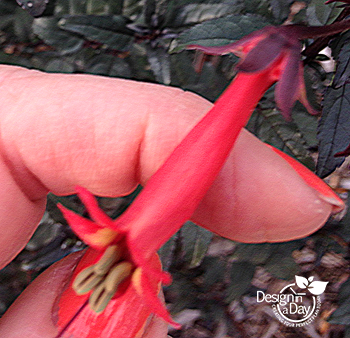 I don’t tend to use the older coral red colored varieties of Cape Fuchsia in front yards as the winter appearance is too ragged without a major trim. If you love this plant like I do, simply cut it to the ground in mid December for a tidy look. People who like a very tidy landscape may want to pass. It will seem too messy for them.
I don’t tend to use the older coral red colored varieties of Cape Fuchsia in front yards as the winter appearance is too ragged without a major trim. If you love this plant like I do, simply cut it to the ground in mid December for a tidy look. People who like a very tidy landscape may want to pass. It will seem too messy for them.
If you’re interested in adding Cape Fuchsia to your landscape or are interested in a colorful modern landscape design, contact me.

